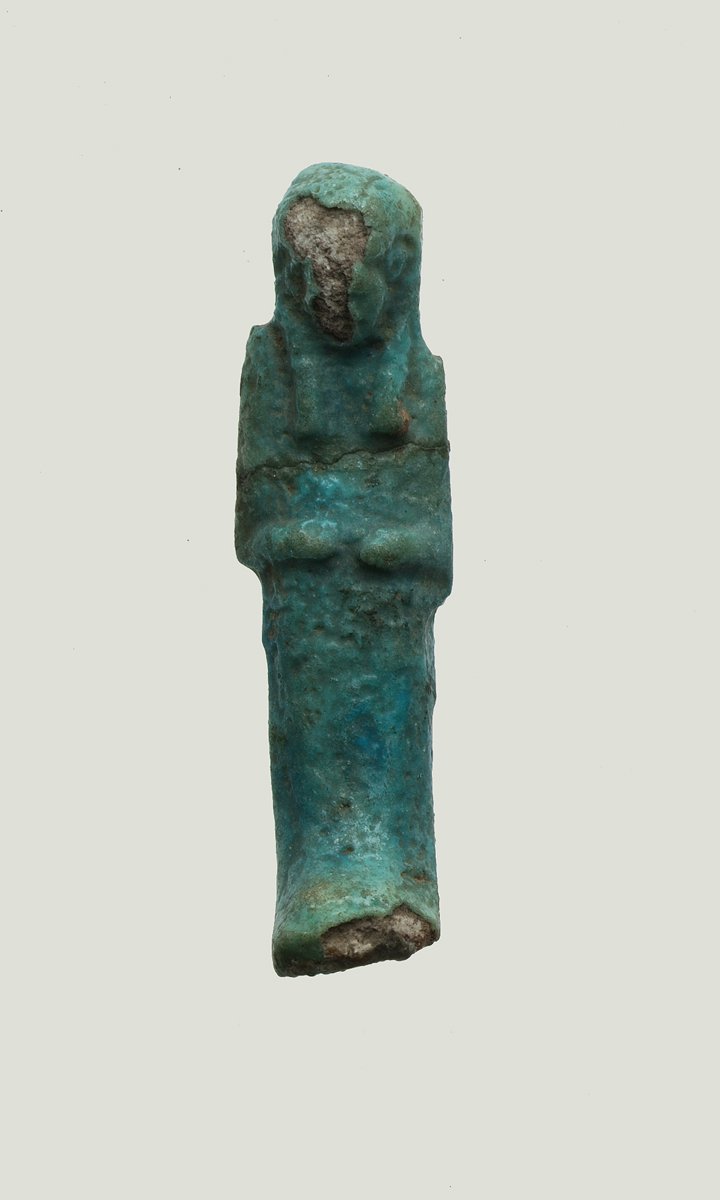
Shabti
Egyptian Art
| Place of production | Egypt |
|---|---|
| Date | 1550–1069 BC |
| Object type | religious or cult object |
| Medium, technique | terracotta, moulded |
| Dimensions | 28.5 x 13.5 x 3.1 cm (11 1/4 x 5 5/16 x 1 1/4 in.) |
| Inventory number | 84.150-E |
| Collection | Egyptian Art |
| On view | Museum of Fine Arts, Basement Floor, Ancient Egypt, Daily life |
This object exemplifies a group of ancient Egyptian statuettes, made of baked clay or less frequently limestone, each depicting a female figure lying on a bed or couch, often accompanied by a small-scale figure of a child, sometimes bordered by images of vessels or cosmetic tools. This type seems to have been introduced in the New Kingdom, during the late Eighteenth Dynasty and continued to be used until the Late Period. Their overall theme and defining formal characteristics relate them to Late Period and Hellenistic votive figurines, made of baked clay or more typically limestone, that depict a female figure standing, with or without a child, within a chapel or a shrine.
This particular piece represents a single female in high relief reclining on a bed with both arms at her side. She is shown frontally. The figure was made in a mould, coated first with a post-firing white then a red wash. The black painting of the wig, the eyebrows, and the contour of the eyes are clearly visible, though much of the original polychrome decoration is now gone. The slightly oversized dimensions as well as the tight-fitting, ankle-length dress, rendered plastically instead of painting, makes this statuette a rare example of its type.
Prevailing scholarly theories tend to label these objects as fertility figurines that may have been deposited as votive offerings in tombs, domestic shrines, and temples of the goddesses Hathor, Mut or Anuket to promote successful conception and grant divine blessings in the perilous time of early childhood.
This record is subject to revision due to ongoing research.